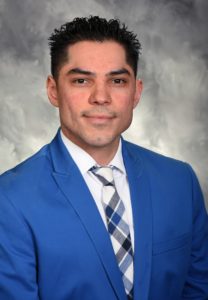October 15, 2021
By Vittorio Mena, OD, MS
As health care practitioners, we need to be on the frontlines for children’s eye health and progressive myopia.

There is a war out there – visually speaking.
As schools have started up again after a year of virtual learning, the eyes of the little ones have been experiencing an ongoing battle. Tablets, gadgets, smartphones, handheld video games, and computers require a lot of up-close visual demand that can cause eye strain, eye fatigue headaches, dry eye syndrome, and the potential for myopia to significantly progress. These devices, typically held three to four inches closer to the eye than the average reading distance of 16 inches, place additional accommodative and convergent demands on the eye.1
Children with emmetropia or hyperopia spent on average 3.7 more hours per week outdoors than those with myopia.2 Furthermore, myopia progression is three to four times faster in winter than in summer.3 Two hours per day of outdoor time has shown to be effective for reducing the onset of myopia but not for slowing the progression of myopic refractive error.4 Environmental factors are critical, and the more a child plays tag, swings a bat, or plays catch outdoors, the better their odds that the onset of myopia will be delayed. Those who spent little time outdoors daily at 8 and 9 years of age are 40% more likely to develop myopia at age 15 than those who spent three hours a day or more outdoors in the summer and more than one hour daily in the winter.5
Getting Serious About Myopia Management
In optometry, our bread and butter has always been prescribing single vision glasses for myopia correction. As health care practitioners, we need to be on the frontlines for children’s eye health and progressive myopia. We must be up to date with the latest research, guidelines, and treatment methods. Because of this, current optometry students are learning about myopia management and how to treat this condition effectively. For seasoned optometrists, I urge you to incorporate myopia management in your practice or refer to a colleague who has developed a myopia management sub-specialty. Any myopic child is a potential myopia management candidate since studies have shown no safe levels of myopia.6 Because of this, myopia management is a challenge to the patient, society, and long-term eye health. Many optometrists out there debate that low levels of myopia are nothing to be concerned about and that it is even beneficial as one gets into their 40s; however, studies have shown that each additional diopter increases visual impairment by 25%, and if we were to reduce myopia by just one diopter, this could reduce visual impairment by 20%, myopic maculopathy by 40%, and open-angle glaucoma by 20%.7
As optometrists, this presents an opportunity to help children decrease vision loss and lifelong complications and bring business to our practices. Some practitioners decide not to do it simply because they do not have an optical biometer to measure axial length. In contrast, others may not do so because fitting young children in contact lenses is complicated. However, many practices are diving into myopia management because several interventions are available to slow myopia progressions. Examples include low-dose atropine, center distance bifocal contact lenses, orthokeratology, and soon, novel myopia control spectacle lenses.
Partnering with Schools
Optical Academy has partnered with the National Education Association and services the New Jersey Education Association (the largest in the country), providing comprehensive eye exams to students and staff members on-site in classrooms, gymnasiums, and libraries. Working with the education association in your state is important because it emphasizes the benefits of regularly receiving comprehensive eye exams and follow-up visits to patients of all ages. It also helps to educate the principals, nurses, teachers, coaches, and athletic directors on what the word myopia means and the potential implications and complications in both the classroom and on the field for children. By being in the school systems, it creates a tripod effect since all communities stem from there. If the child is examined at school, the parent or grandparent may also want to be examined at the office, bringing more revenue into the practice. The entire family then receives critical eye care.
Optical Academy is looking for a network of doctors to partner with around the country. Specifically, practitioners willing to tag-team in the school systems to examine students and educators on-site, bring them back for follow-up care at their own offices and continue spreading the message inside the school districts. For more information on how to partner with the school systems in your state, contact menavitt@gmail.com.

Dr. Vittorio Mena works as the Sports Vision Director at Optical Academy in Clifton, N.J., and works alongside the New Jersey Education Association. He also serves as an Advanced Clinical Director for the Special Olympics Lions Club International Opening Eyes program for the state of New Jersey.
References:
- Santini, B. “Controlling Myopia in Children” 20/20 magazine. Aug 2014.
- Sherwin JC et al. Ophthalmology. 2012; 119(10):2141-2151.
- EyeNet Nov. 2015. 72-77.
- Walline, JJ. “Myopia Control: A Review.” Eye Contact Lens. Oct 27, 2015.
- Ma X et al. Br Med J. 2014; 349:g5740.
- Flitcroft, D. (2012). “The complex interactions of retinal, optical and environmental factors in myopia aetiology.”Progress in Retinal and Eye Research.31(6): 622-660.
- Bullimore, M et al. “The Risks and Benefits of Myopia Control” American Academy of Ophthalmology. May 4, 2021













